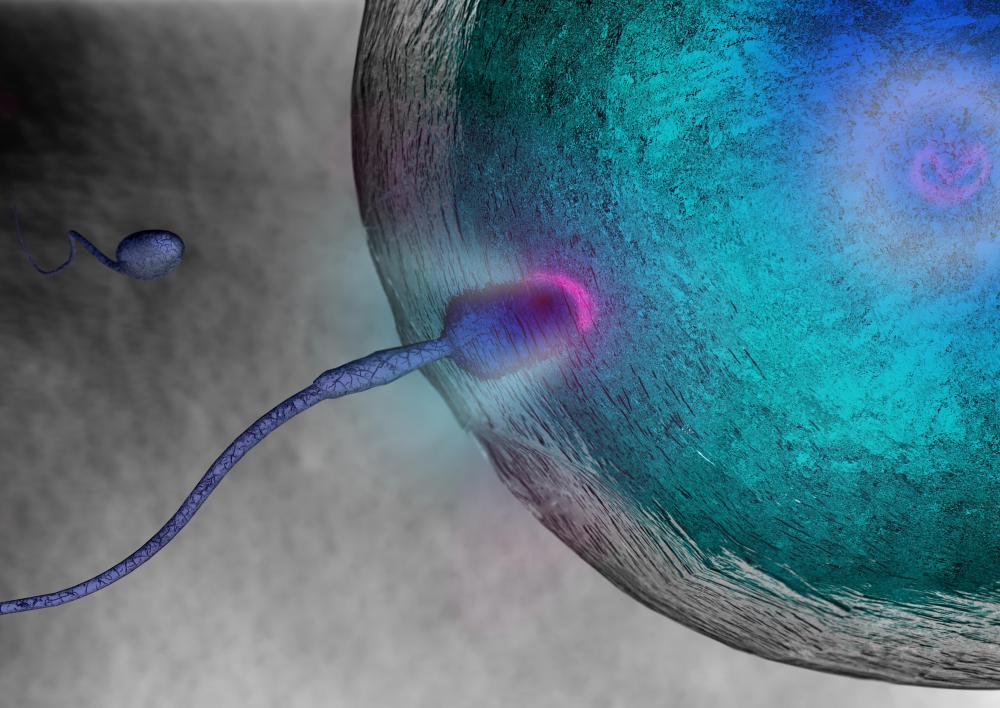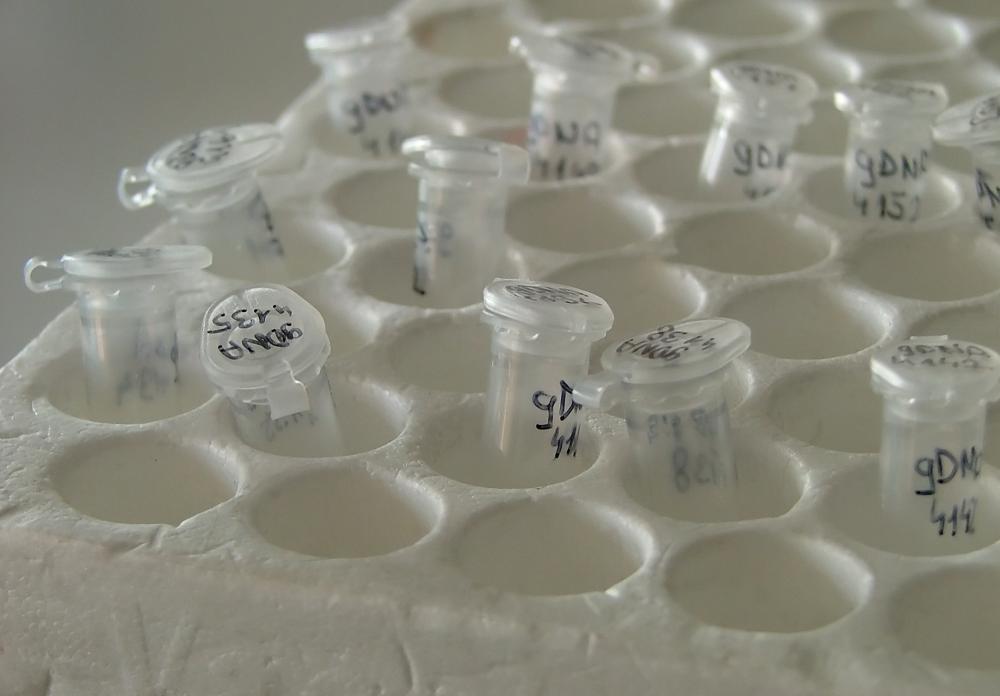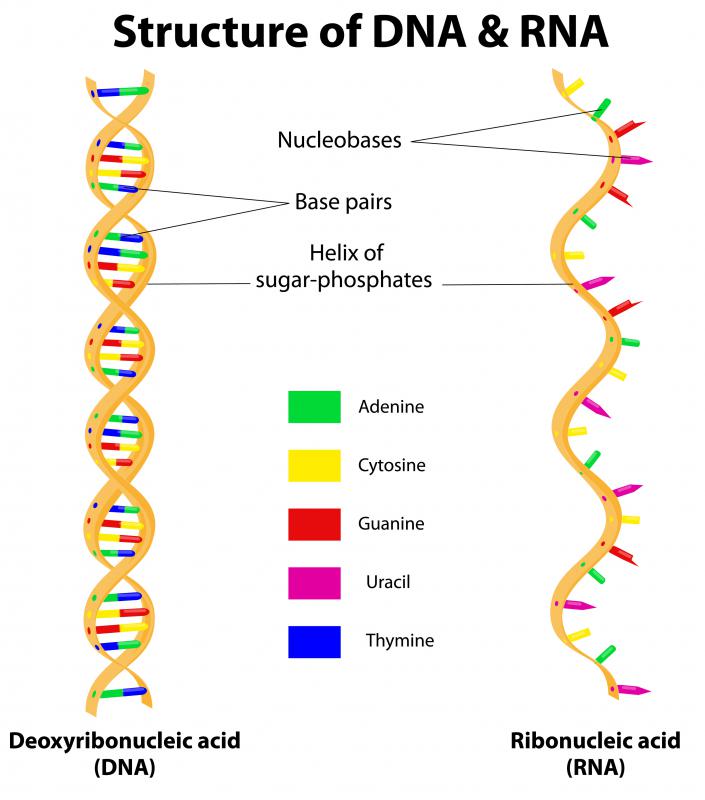At TheHealthBoard, we're committed to delivering accurate, trustworthy information. Our expert-authored content is rigorously fact-checked and sourced from credible authorities. Discover how we uphold the highest standards in providing you with reliable knowledge.
What Are the Different Types of DNA?
In human genetics, there are four general types of deoxyribonucleic acid (DNA). These are the autosomal, mitochondrial, the X chromosome, and the Y chromosome DNA. All of these types are built and encoded with a "program" that hugely predicts a person's appearance, personality, and intelligence. Only 0.1% of the human genetic structure is programmed differently, making each person unique.
The autosomal DNA makes up the 22 out of the 23 chromosome pairs in a human. The autosomes are the genetic material that humans inherit from their parents, who inherit theirs from their parents, and so on. Each autosome goes through a genetic process that randomly pairs up the autosomes from each parent, called "recombination," after which the newly paired autosomes are passed down to the children. This is why children tend to look like their parents, or even their great-grandparents, because the autosomes are imprinted with all the genetic blueprints from each of the preceding generations. The autosomal DNA is very important in finding out a person's ancestry and parentage, especially for people who question who their parents are.

Mitochondrial DNA is another type that is contained inside the mitochondria, which are considered the "powerhouses" of the cell. The mitochondria are basically the part that gives the cell its energy, and also contains DNA that separately reproduces its own copy. Unlike autosomes that pass down genes from both parents, the mitochondria follow a maternal line, although a mother also passes down her mitochondrial DNA to her sons. This makes mitochondrial testing less accurate if a person wants to trace her family tree, although it may be more effective to use a maternity test to determine a person's biological mother.

Of all the 23 chromosome pairs that make up a human being, only one pair is allocated to determine the sex of the child. This particular pair is called the allosomal pair, which contains the X and Y chromosome DNA. Females generally have two X chromosomes, while males have one each of the X and Y chromosomes. During fertilization, the mother passes down one of her X chromosomes to her offspring, regardless of its sex. The father's sperm, on the other hand, donates his X chromosome to make another female offspring, while passing down his Y chromosome to a male offspring.

Each of these X and Y chromosomes contains ancestral genetic information like the autosomal DNA, but the former chromosomes are not as accurate. The Y chromosome in particular may provide less genetic information than the X, as it is only passed from father to son. Overall, what is remarkable about all these types of DNA is that their primary structure remains unchanged, even though they are produced by random fragments.
AS FEATURED ON:
AS FEATURED ON:















Discussion Comments
I'm not looking forward to the day when scientists can alter and create DNA in the lab, so they can create/build any organism that ever lived, and some that haven't lived. All of these advances in the understanding of DNA makes me wonder how far fetched some of those science fiction movies are. Could we one day actually be able to bring dinosaurs back to life? That's a scary and exciting thought at the same time.
@Laotionne - I agree that DNA is a welcomed addition to criminal cases. Another way DNA has helped many people is in the way DNA tests can be applied to determine who the parents of a child are. Unfortunately, too many TV talk shows have seen fit to use paternity tests as a way to increase ratings, but they are actually beneficial in the real world.
Also, we have all heard of at least one story where someone took the wrong baby home from the hospital. This rarely happens, but with DNA testing this is an easy error to correct.
I think it is great the way law enforcement technicians are able to use DNA to find out who committed crimes. Before the advances in DNA, most criminal cases relied on witnesses being able to identify the people who were accused of committing crimes. The scary thing about this is that most eyewitnesses are not reliable. They often get it wrong.
This happens because a lot of times witnesses to crimes remember obvious facts like the color clothes a person was wearing, or the color of a person's skin, or the length of a person's hair, and none of these characteristics are going to be specific to only one person. I hate to think of the number of people who have been wrongly convicted and sentenced to prison because someone identified the wrong person.
Post your comments